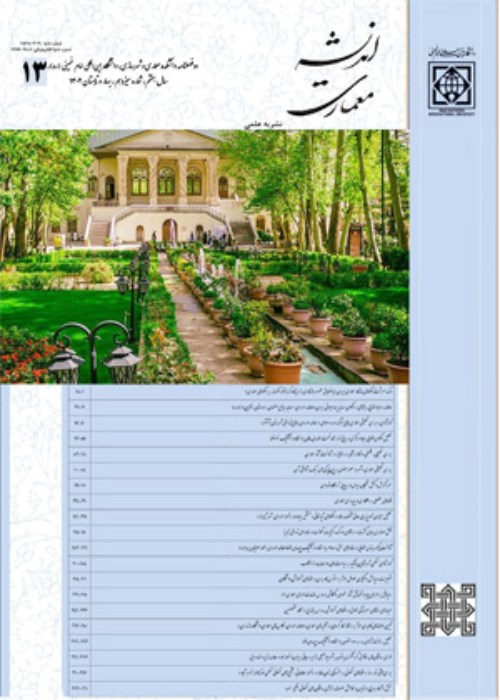Reading the production of architectural space in the Pahlavi era and the domination of the institution of power; A Case Study of the Azadi Tower
The fact that the production of space in the modern world is dominated by the ruling institutions is one of the most controversial propositions in architectural theories, as urban space control is presented as a political tool to exercise the domination of governments. Space, as a political tool that is materialized through its representations in architecture and urban space, leads to the expansion of power in modern urban life. Lefebvre has addressed this issue through the representations of space in the theory of space creation, and deals with the issue that governments use architecture and urban planning as a tool to control people's actions and thoughts and instill their desired ideologies into them. With regard to this, in this study, which aims to explain how to use architecture to dominate space and induce the desired meanings and concepts of governance, the dominance of governance institutions through representations of space in contemporary Iranian architecture was examined.Research Question: How has the government used architecture as a tool to dominate space? what meanings and concepts has the government sought to instill in people by using architecture?
Accordingly, in this research, which is based on the qualitative research method, data were collected based on the documentary method, field observations, and content analysis. Research findings were obtained. Since the beginning of developments in the field of city and architecture and the formation of new government structures and urban planning in Iran is from the Pahlavi period, the hypothesis of this study is that in the Pahlavi era, due to dictatorial thinking in line with the dictatorship in the world, the government used tools from architecture and urban planning, it seeks to induce its desired concepts and through this, it has dominated the space. Therefore, based on the theoretical foundations of the research, the Pahlavi period was studied.
All developments in the field of architecture and urban planning in the first Pahlavi period, based on modern and non-traditional ideas, were carried out by the government and were in line with political and governmental programs and directly under the supervision of military organizations and the government. Therefore, in this period, we see the focus on political ideas and concepts in the structure of the city and military and civilian buildings. In the second Pahlavi period, this process took place through the development of cities and the construction of functional and memorial buildings. This trend continues in another way in the second Pahlavi period. Therefore, through the analysis of architecture and urban planning of the first Pahlavi period and the case study of the Freedom Monument as a political monument from the second Pahlavi period, the method of domination of space was investigated and the concepts of governance in these two periods were extracted. The results of this study shows This trend was achieved in the first Pahlavi period through archeology and the display of ancient architecture, modeling development models in nineteenth-century European urbanism, and the construction of huge and lofty buildings. And confronting the tradition and instilling a sense of permanence, establishment, stability of the government and Pahlavi military authority. On the other hand, the construction of squares, which was functionally in line with the development of the city, also became a place to show the military power and authority of the government through purposeful naming and the use of tools. In other words, the institutions in power in this way have sought to realize the meanings and concepts considered in the urban spaces and architecture of this period. In the second Pahlavi period, hegemony through art and architecture has purposefully determined which subjects and historical events are worthy of public representation and where they should be placed to have the greatest impact, and in this regard simultaneously with the development and construction of cultural buildings. We are witnessing the construction of monumental buildings in a purposeful way, which has a greater meaning. Using different models of Iranian and modern architecture, in addition to presenting a new definition of modern Iran, it shows the glory of the imperial Iran, the civilization of ancient Iran and the validation of the imperial system and ideologies of government.
- حق عضویت دریافتی صرف حمایت از نشریات عضو و نگهداری، تکمیل و توسعه مگیران میشود.
- پرداخت حق اشتراک و دانلود مقالات اجازه بازنشر آن در سایر رسانههای چاپی و دیجیتال را به کاربر نمیدهد.


